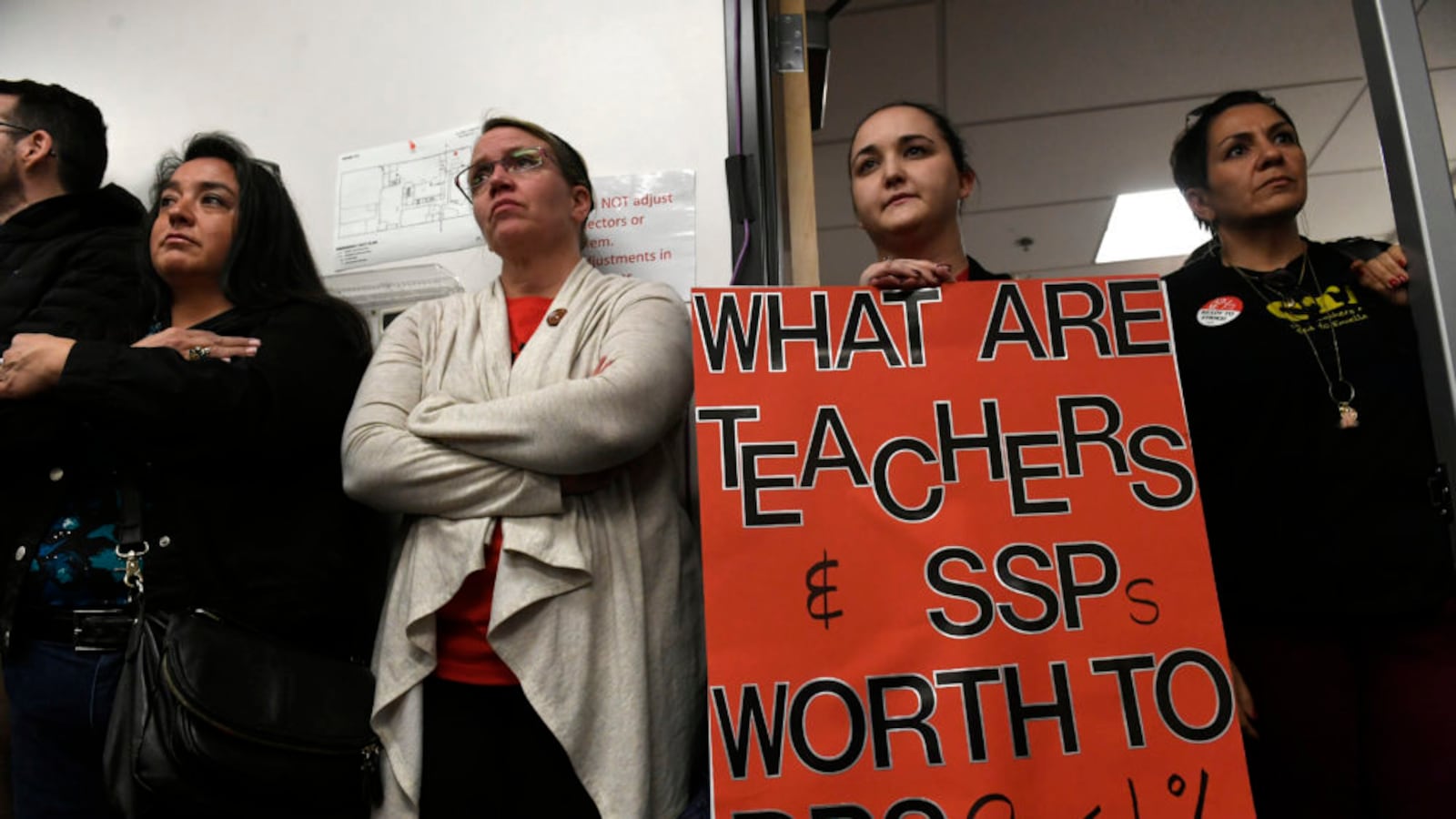Minor. Small. Limited.
Those are the words Gov. Jared Polis used Wednesday to describe the outstanding differences between the teacher pay plans proposed by the Denver school district and teachers union, as he announced he would not intervene to stop a teacher strike.
But if you’ve been watching the district and the union negotiate over the past 15 months, and hearing teachers boo district officials and shout “Shame!” at the superintendent, “minor” is perhaps not the word that would come to mind.
Denver teachers want more money for teacher pay, and a more predictable salary structure that beefs up their base salaries and shrinks the size of bonuses and incentives.
Denver Public Schools officials have agreed to increase base salaries, but are fighting to keep certain incentives more robust than what the union has proposed.
So how far apart are the two sides, exactly?
The Office of State Planning and Budgeting has provided a helpful breakdown. We’ve synthesized it below, along with our own understanding of the two sides’ proposals.
The district and the union agree:
- That teachers should be paid more. To that end, the district is proposing adding about $20 million to the more than $400 million it already spends on teacher compensation. The union’s proposal calls for adding an additional $28 million.
- On moving back to a traditional “steps and lanes” salary schedule, where teachers get raises based on years of positive evaluations and their own education. Currently, the steps and lanes schedule is used only to set teachers’ starting pay.
- On paying a $750 annual bonus to teachers in 10 “distinguished schools.” The criteria for deciding what makes a school distinguished would be agreed upon by both sides, but it would no longer be largely based on state test scores.
- On paying a $2,500 annual incentive to teachers who work in hard-to-fill positions, such as special education, secondary math, or English language acquisition.
- On offering all teachers an annual $1,000 tuition reimbursement or loan repayment, with a maximum $6,000 reimbursement over a teacher’s career.
The district and the union disagree:
- On the size of an incentive for teachers who work at high-poverty schools. The district has proposed a $2,500 annual incentive. The union has countered with $1,750, with the difference going to increase the base salaries of all teachers.
- On the existence of an incentive for teachers who work at 30 “highest-priority” schools. The district wants to pay those teachers an extra $2,500 annually. The union does not. Instead, it wants to use that money to increase the base salaries of all teachers.
- On the number of “steps” and “lanes” the salary schedule should have. The lanes are the most contentious. Lanes represent a teacher’s education level — for instance, if a teacher has a bachelor’s degree or a master’s degree plus 30 credits. The district’s proposed salary schedule has six lanes. The union’s proposed schedule has eight lanes, which would give teachers more opportunities for raises.
- On the ways in which teachers could move between lanes. The district has proposed allowing teachers to move a lane — and get a raise — if they earn a certain number of college credits, an advanced degree, an advanced license or certification, or for 10 years of continuous service with the district. The union’s proposal does not include a lane change for 10 years of service, but it would allow teachers to change lanes for completing training courses.
- On the starting base salary for teachers. The district has proposed $45,500 for the 2019-20 school year. The union has proposed $45,800.
State budget officials have estimated the union’s proposal would cost $28.4 million in the first year, while the district’s proposal would cost $20.8 million.

